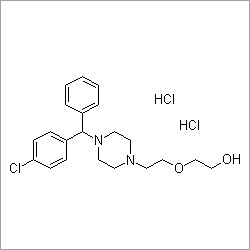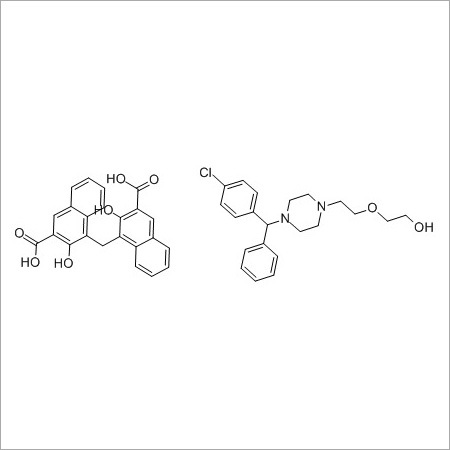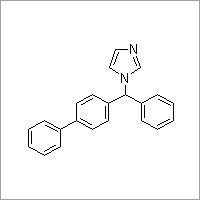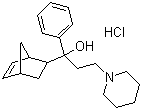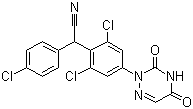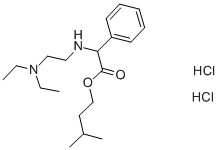Most Popular Products
Capecitabine
Capecitabine Specification
- Heavy Metal (%)
- 0.001%
- Smell
- Odorless
- Taste
- Bitter
- Loss on Drying
- 1.0%
- Ph Level
- Neutral to slightly acidic (pH 6-7 in suspension)
- Molecular Weight
- 359.35 g/mol
- Particle Size
- Typically 50-150 microns
- Boiling point
- Not applicable (decomposes)
- EINECS No
- 629-995-7
- HS Code
- 29349900
- Molecular Formula
- C15H22FN3O6
- Storage
- Store in a cool, dry place, protected from light
- Solubility
- Slightly soluble in water, soluble in methanol and DMSO
- Shelf Life
- 2-3 years if unopened and stored properly
- Structural Formula
- See accompanying image or consult reference resources
- Color
- White to off-white
- Melting Point
- 110-120C
- Poisonous
- Yes (cytotoxic)
- Medicine Name
- Capecitabine
- Chemical Name
- Capecitabine
- CAS No
- 154361-50-9
- Type
- Other
- Grade
- Other
- Usage
- Used as an antineoplastic agent in cancer treatment, especially for colorectal and breast cancer
- Purity(%)
- 98%
- Appearance
- White to off-white crystalline powder
- Physical Form
- Solid
Capecitabine Trade Information
- Minimum Order Quantity
- 1 Kilograms
- Supply Ability
- 2000 Kilograms Per Day
- Delivery Time
- 1 Days
About Capecitabine
Capecitabine, a superb antineoplastic agent, is renowned for its latest reduced impurity profile (2.0%) and customizable packaging options. Manufactured via a synthetic process, Capecitabine boasts remarkable stability under recommended storage conditions and highly complies with ICH residual solvent standards. With exceptional purity (98%), this white to off-white crystalline powder is suitable for advanced cancer treatment, particularly in colorectal and breast cancers. Its neutral to slightly acidic pH, minimal heavy metal content, and flexible particle size further highlight its premium quality. Exported worldwide, Capecitabine is trusted by distributors and traders alike for its efficacy and robust supply chain.
Therapeutic Suitability and Application Site
Capecitabine, with remarkable versatility, is suitable for use as an antineoplastic agent in hospitals and clinical cancer centers. Its primary advantage lies in treating colorectal and breast cancers, serving as a powerful option for oncologists. Site of application is typically oral administration, making it convenient for patients undergoing chemotherapy regimens without the need for invasive procedures.
Packaging, Supply Ability, and FOB Port Details
Capecitabine is dispatched in sealed aluminum bags or HDPE containers, tailored as per customer requirements to reduce unnecessary expenditure. With stable supply ability and competitive list price, shipments are organized from renowned FOB ports, ensuring timely and secure delivery. Proper packaging ensures product integrity, preservation during transit, and compliance with international dispatching standards.
Therapeutic Suitability and Application Site
Capecitabine, with remarkable versatility, is suitable for use as an antineoplastic agent in hospitals and clinical cancer centers. Its primary advantage lies in treating colorectal and breast cancers, serving as a powerful option for oncologists. Site of application is typically oral administration, making it convenient for patients undergoing chemotherapy regimens without the need for invasive procedures.
Packaging, Supply Ability, and FOB Port Details
Capecitabine is dispatched in sealed aluminum bags or HDPE containers, tailored as per customer requirements to reduce unnecessary expenditure. With stable supply ability and competitive list price, shipments are organized from renowned FOB ports, ensuring timely and secure delivery. Proper packaging ensures product integrity, preservation during transit, and compliance with international dispatching standards.
FAQs of Capecitabine:
Q: How should Capecitabine be stored for optimal stability?
A: Capecitabine should be stored in a cool, dry place, protected from light to maintain its stability. When kept unopened and under recommended conditions, the product exhibits a shelf life of 23 years.Q: What is the main therapeutic benefit of Capecitabine?
A: Capecitabine offers a remarkable advantage in the treatment of colorectal and breast cancers, acting as an effective antimetabolite agent that targets rapidly dividing cancer cells.Q: When is Capecitabine typically used during cancer treatment?
A: Capecitabine is commonly used as part of a chemotherapy regimen, either as a first-line treatment or in combination with other antineoplastic agents, depending on the type and progression of cancer.Q: Where can Capecitabine be supplied from and in what packaging?
A: Capecitabine is available for supply from renowned distributors, exporters, and manufacturers worldwide. It is typically packaged in sealed aluminum bags or HDPE containers, customized based on customer requirements.Q: What process is involved in manufacturing Capecitabine?
A: Capecitabine is manufactured using a synthetic process that ensures high purity, low total impurity, and compliance with international guidelines for pharmaceutical quality.Q: How does the particle size and purity of Capecitabine affect its usage?
A: The reduced particle size (typically 50150 microns) and high purity (98%) contribute to better dispersion, consistent dosing, and superior therapeutic outcomes during its clinical administration.
Price 100 INR/ Kilograms
- Minimum Order Quantity
- 1 Kilograms
- Supply Ability
- 2000 Kilograms Per Day
- Delivery Time
- 1 Days
Tell us about your requirement

Price:
Quantity
Select Unit
- 50
- 100
- 200
- 250
- 500
- 1000+
Additional detail
Mobile number
Email
More Products in Pharmaceutical API Category
Biperiden Hydrochloride
Price 100 INR / Kilograms
Minimum Order Quantity : 1 Kilograms
Grade : Other
Type : Other
Molecular Formula : C21H29NO.HCl
Physical Form : Solid
Ambuphylline
Price 100 INR / Kilograms
Minimum Order Quantity : 1 Kilograms
Grade : Other
Type : Other
Molecular Formula : C9H16N6O2
Physical Form : Solid
Diclazuril
Price 100 INR / Kilograms
Minimum Order Quantity : 1 Kilograms
Grade : Other
Type : Other
Molecular Formula : C17H9Cl3N4O2
Physical Form : Solid
Camylofine Dihydrochloride
Price 100 INR / Kilograms
Minimum Order Quantity : 1 Kilograms
Grade : Other
Type : Other
Molecular Formula : C13H22Cl2N2O2
Physical Form : Solid
"We are into Supply of Pharmaceutical Raw Material / API". We only deal in Bulk Quantity. We do not deals in Pakistan and Bangladesh Countries.
 |
ANGLE BIO PHARMA
All Rights Reserved.(Terms of Use) Developed and Managed by Infocom Network Private Limited. |


